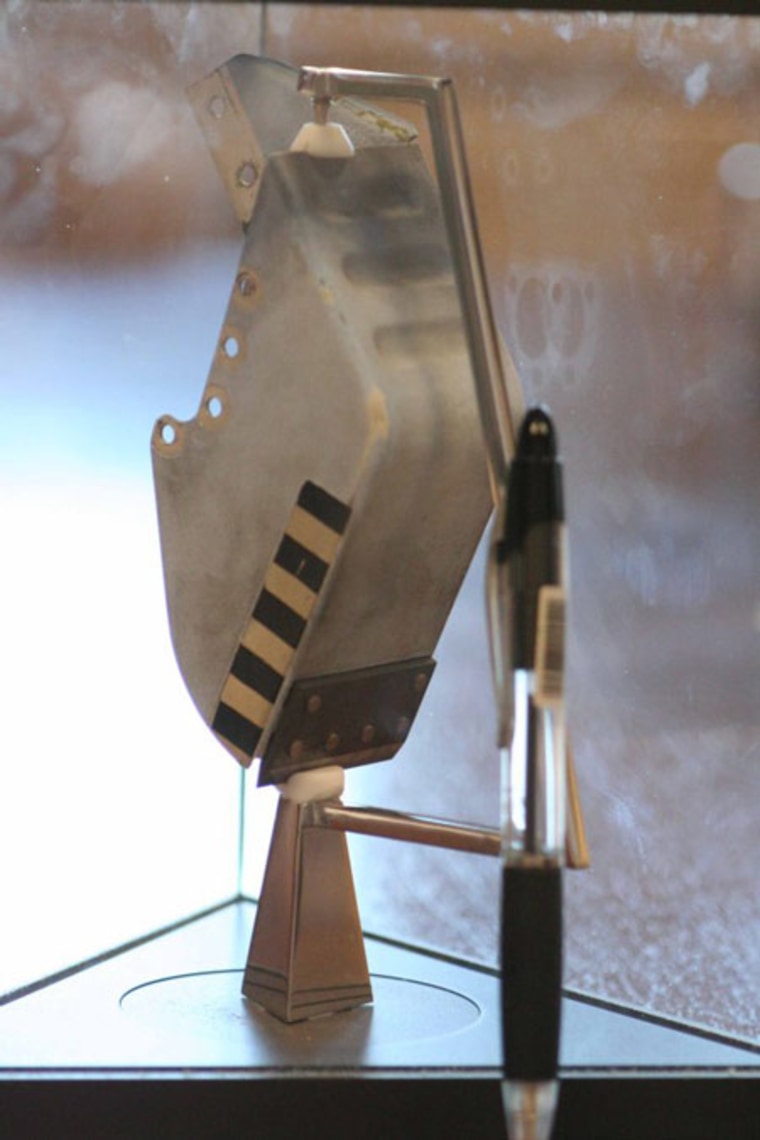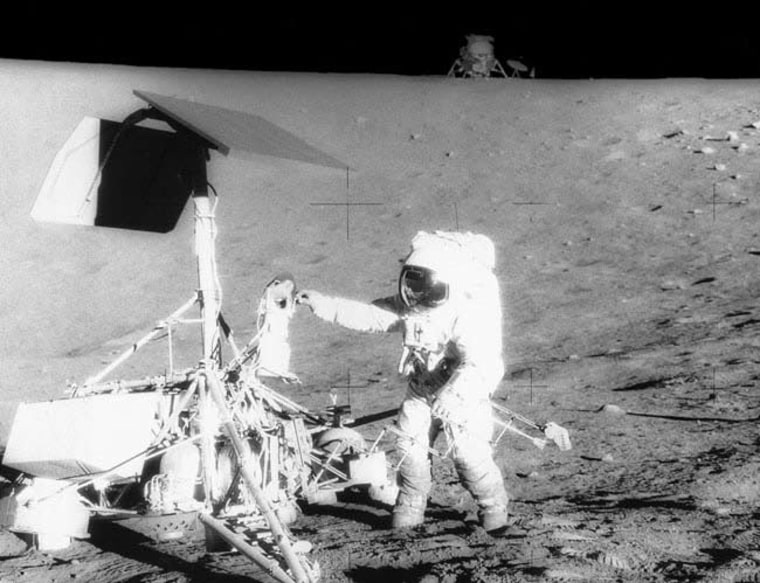When astronauts Pete Conrad and Alan Bean stepped out of the Apollo 12 lunar module in November 1969, they were within walking distance of Surveyor 3, an unmanned U.S. spacecraft that had landed in April 1967.
The Apollo landing site was picked on purpose. Surveyor 3 had spent more than two years exposed to the moon's harsh vacuum, intense cosmic radiation, bombardment by meteoroids and extreme temperature swings. NASA engineers wanted to know how metals, glass and other spacecraft building materials held up.
Bean and Conrad took dozens of photographs and measurements, and removed parts from the robotic lander, including a small scoop at the end of Surveyor's extendable arm that had dug into the lunar dirt.
The scoop, a camera, and other artifacts were returned to Earth, analyzed, then put in storage, NASA explained in a recent statement. At some point in the intervening four decades, the scoop, owned by Johnson Space Center, was transferred on permanent loan to a space museum in Kansas. Then recently researchers at NASA's Glenn Research Center realized the little scoop could hold big secrets.
When NASA returns to the moon, there will be plans to dig. The rocky, dusty lunar soil, called "regolith," contains natural resources, from oxygen to water ice, which could help support a colony.
But while terrestrial soil is moist and rounded by weather, lunar regolith is a dry, glassy substance pounded into dusty smithereens by eons of meteoritic bombardment.
"To design lunar digging equipment, we need to predict the forces required to move a scoop or other implement through lunar regolith," said Allen Wilkinson, team leader of the ISRU (In-Situ Resource Utilization) Regolith Characterization team at the Glenn Research Center.
Blueprints for scoop were lost
Surveyor 3 and a sister ship Surveyor 7 actually dug into the moon and measured how hard their drive motors had to work to scoop, press, and scrape the soil. To interpret those measurements more than 40 years later, however, Wilkinson's team needs to know the dimensions of the Surveyor scoops. Unfortunately, they learned, the blueprints had been lost. Only a scoop itself could provide the answer.

That sent Wilkinson to Hutchinson, Kansas, in April 2007 to borrow the Surveyor 3 scoop from the Kansas State Cosmosphere in order to make detailed measurements.
Measuring the scoop, however, would prove to be no simple matter. You can't just lay a ruler along the scoop and read off the dimensions. Indeed, you can't touch it at all. The Surveyor 3 scoop is in an airtight triangular container, and NASA curators do not wish the scoop to be removed because handling in air will degrade the historical fidelity of the unique artifact.
So the Glenn team borrowed photogrammetry apparatus from the Kennedy Space Center. Photogrammetry is a technique of measuring objects strictly from photographs. They have a photographic studio setup with a white background.
GRC team member Juan Agui, an expert in digging force experiments, photographed the scoop in its container next to a standard photogrammetry cube, which has a precise checkerboard pattern on it. Then, using software, Robert Mueller of the Kennedy Space Center extracted dimensions using mathematical triangulation, measuring from points on the scoop to points where corners of dark checks meet on the cube. The software was developed for the Columbia Accident Investigation Board activity.
Constructing a replica of the scoop
"Photogrammetry is pretty good," Agui said. "We got measurements of the scoop accurate to 0.030 or 0.040 inch," or about 1 millimeter.
They've since constructed a replica of the scoop and now they are using it to dig into simulated lunar regolith.
The replicated scoop plunges into a rectangular "soil bed" filled with JSC-1a, a man-made moondust substitute that closely matches the known properties of lunar regolith, while a computer monitors bearing forces.
"The measurements appear to be close to reproducing [the best] Surveyor 7 data from the moon," Agui said.
With this test bed in place, the team can now test alternate scoop designs and refine theories of lunar soil mechanics.
"Obtaining the Surveyor replica really made the difference," Agui said.
